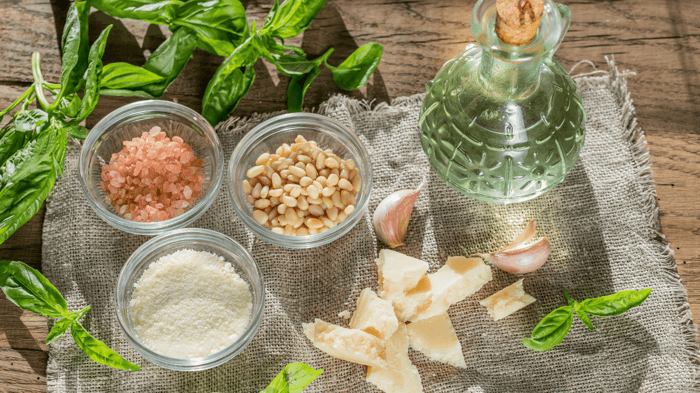Table of Contents
Exercise is one of the most powerful tools for overall wellness—but its influence goes beyond toned muscles or cardiovascular health. It directly affects vaginal health too, shaping everything from circulation and tissue elasticity to hormone balance and pelvic support.
Regular physical activity, especially exercises that strengthen the pelvic floor, can enhance vaginal support and reduce the risk of dysfunction. At the same time, understanding how intensity, type, and lifestyle choices interact with intimate wellness helps women make smarter choices for their bodies.
While intense training or poor hygiene habits can sometimes disrupt the vaginal ecosystem, moderate and intentional exercise usually strengthens it—creating healthier tissues, better lubrication, and improved sexual comfort.
Key Ways Exercise Impacts Vaginal Health
Exercise influences vaginal health through several mechanisms. It boosts circulation, improves pelvic floor function, balances hormones, and lowers stress—all critical factors in intimate wellness.
Improving Circulation and Tissue Health
Blood flow is life for vaginal tissues. Exercise increases circulation, delivering oxygen and nutrients that keep the vaginal walls strong, elastic, and resilient. Good circulation reduces dryness and enhances sensitivity, making intimacy more comfortable and pleasurable.
Pelvic floor muscles also benefit. These deep muscles support vaginal tone and function, protecting against prolapse, urinary leakage, or laxity. Activities like walking, swimming, yoga, or targeted exercises (like Kegels) directly reinforce this support system.
Better circulation also strengthens the immune response in the vaginal area, helping maintain a balanced microbiome and lowering the risk of infections.
Supporting Hormonal Regulation
Hormones, particularly estrogen, are central to vaginal health. Estrogen keeps tissues lubricated, thick, and flexible. Exercise doesn’t magically raise hormone levels, but it supports the endocrine system and prevents drastic dips triggered by stress, aging, or inactivity.
For women approaching menopause, this effect is especially valuable. Moderate activity can help counter the vaginal dryness or irritation that comes with declining estrogen. It’s a natural way to support tissue vitality at every stage of life.
Reducing Stress for Vaginal Wellness
Stress hormones like cortisol disrupt both vaginal comfort and sexual function. Elevated stress may cause tightness, irritation, or changes in discharge. Exercise helps regulate these hormones by releasing endorphins—the body’s natural mood boosters.
By lowering stress, exercise reduces pelvic tension and enhances relaxation. The link between emotional wellness and vaginal health is real: calm mind, calm body.
Pelvic Floor Strength and Vaginal Function
Strong pelvic floor muscles are non-negotiable for intimate wellness. They act as the body’s internal sling, holding and supporting the vagina, bladder, and uterus.
Role of Pelvic Floor Muscles
When these muscles are strong, they protect against urinary leaks, maintain vaginal tone, and ensure proper support during daily activities. Weakness, however, can lead to incontinence, vaginal laxity, or pelvic heaviness.
Every time abdominal pressure increases—whether during exercise, lifting weights, or even laughing—pelvic floor muscles contract to keep organs stable. Without strength, symptoms like leakage or pressure can develop.
Benefits of Pelvic Floor Exercises
Kegel exercises are the cornerstone of pelvic floor training. Done correctly and consistently, they improve muscle tone, vaginal support, and bladder control. Unlike general strength workouts, Kegels target these intimate muscles directly, making them essential for vaginal wellness.
Guidance from a physical therapist or women’s health professional ensures proper technique, which is key for results. Over time, pelvic floor exercises can transform comfort, confidence, and sexual health.
Managing Pelvic Floor Dysfunction
Pelvic floor dysfunction shows up as leakage, pain, or looseness. Management often involves physical therapy, biofeedback, or personalized exercise programs. For postpartum women or athletes under heavy strain, early attention prevents long-term issues and restores quality of life.
Preventing and Managing Vaginal Health Challenges
Exercise brings benefits—but also challenges if habits and hygiene aren’t managed well. Here’s how to keep balance.
Exercise and Common Infections
Moisture and warmth around the genital area can foster yeast or bacterial infections, especially if sweaty clothes are worn too long. Good hygiene helps prevent this.
Change out of sweaty clothes promptly
Choose breathable cotton underwear
Avoid overly tight activewear for long periods
Shower and dry the area thoroughly after workouts
Exercise also boosts immunity, giving your body an edge in fighting infections.
Addressing Vaginal Dryness and Irritation
Friction, sweat, or hormonal changes can cause dryness during exercise. Hydration, breathable fabrics, and gentle cleansers make a difference. If needed, plant-based moisturizers or supplements can support comfort without hormones.
For postmenopausal women, dryness may persist—local therapies or natural solutions like Slippery Elm Bark, found in She Juicy™, can nourish tissues and restore natural lubrication from the inside out.
Choosing the Right Clothing and Hygiene
Breathable fabrics and gentle cleansing matter. Nylon and polyester trap sweat, while cotton allows airflow. Avoid harsh soaps that strip delicate skin, and instead use mild cleansers or just water.
Exercise Considerations Across Life Stages and Activities
Every life stage and type of activity interacts differently with vaginal health.
Exercise and the Menstrual Cycle
Energy and comfort shift across the cycle. During the follicular phase, high-energy workouts may feel easier; during the luteal phase, lighter activities like walking or yoga may reduce cramps and fatigue.
Exercise also helps stabilize vaginal tissue changes linked to hormones, improving lubrication and lowering infection risk.
PCOS and Physical Activity
Women with polycystic ovary syndrome often struggle with hormone imbalance, weight, or insulin resistance—all of which affect vaginal and reproductive health. Exercise helps regulate cycles, improve insulin sensitivity, and reduce inflammation, creating better outcomes for vaginal wellness.
Impact of Yoga and Cycling
Yoga supports pelvic floor strength, flexibility, and stress reduction. It’s one of the most vagina-friendly workouts you can do.
Cycling, on the other hand, can create pressure on the perineum if posture or equipment aren’t adjusted. Using padded seats, shifting positions, and balancing cycling with pelvic floor training keeps the benefits while minimizing risks.
The Flower Power® Perspective
At Flower Power®, we believe exercise and intimate wellness go hand in hand. Movement fuels circulation, hormone balance, and stress relief—but true vaginal health also deserves daily care beyond the gym.
That’s why we created She Juicy™, a plant-based, hormone-free supplement powered by Slippery Elm Bark. Unlike temporary solutions, it works from the inside out to nourish tissues, restore natural lubrication, and boost confidence.
Because self-care isn’t just about skincare or fitness—it’s about feeling juicy, vibrant, and empowered, every single day. Discover She Juicy and add intimate wellness to your self-care routine.
FAQs
Does exercise change vaginal discharge?
Yes, increased blood flow and sweat can raise discharge. This is usually healthy and helps cleanse the vagina.
Can exercise increase cervical mucus?
Slightly, yes. Circulation and hormonal changes may increase mucus, which is normal and often beneficial.
Why are Kegels important?
They strengthen pelvic floor muscles, improving bladder control, vaginal tone, and sexual health.
Can pelvic floor training prevent pain after workouts?
Yes, by improving strength and flexibility, these exercises reduce strain and post-exercise discomfort.
Why might discharge look different after exercise?
Sweat mixing with natural secretions can alter color or consistency. Persistent unusual discharge should be checked by a provider.










